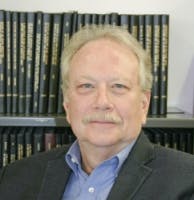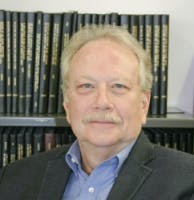The LRC’s MARK REA explains why a thorough understanding of metrics and test methodologies is necessary in order to make fair comparisons of the performance and energy savings potential regarding horticultural lighting luminaire types.
Interested in articles & announcements on horticultural lighting technology and research?
Why were the conclusions different? The main reason is that the DOE report did not compare horticultural lighting systems from a grower’s perspective. The LRC report compared HPS and LED lighting systems for a constant PPFD on the plant canopy. PPFD for plants is analogous to photopic illuminance on a work surface in an architectural application. Just as it is only valid to compare the power densities of alternate lighting systems at equal illuminance levels on the work plane, the power densities of alternate horticultural luminaires should only be compared when they provide the same PPFD on the plant canopy — and PPFD is what matters to growers. The DOE report “assumed that LED lighting products used in greenhouses can function as 1 to 1 replacements for existing HID fixtures” (p. 13). The LRC found that, on average, approximately three times as many LED horticultural luminaires would be needed to provide the same PPFD as a typical 1000W HPS horticultural luminaire layout (p. 35). Moreover, the DOE report notes that the “HPS and MH lamp wattages provided do not include ballast efficiency losses” (p. 13), while the LRC report considered the effectiveness of the entire lighting system in a controlled growing environment.
In that same vein, the DOE reached a different conclusion than the LRC because the DOE didn’t consider the intensity distribution from the luminaires. The DOE report simply states, “[The] impact [of intensity distribution] is currently difficult to quantify” (p. 6). The LRC, in fact, measured the luminaire intensity distributions in its laboratory and through photometrically accurate software was able to assess the lighting system energy requirements necessary to reach minimum PPFD and uniformity criteria, to ensure that all plants in the simulated greenhouse would receive sufficient radiant energy from the luminaires. The results show that intensity distribution plays an important role, illustrated by the fact that two of the tested LED luminaires had higher luminaire efficacy than the HPS luminaires but still had a higher total power demand in the greenhouse application. Stakeholders can be misled by considering luminaire efficacy alone. Rather, the luminaire intensity distribution and layout to reach a criterion PPFD are necessary for an accurate comparison of lighting systems.
As a small point, the DOE report states that the lack of UV emissions from LED horticultural luminaires is not an issue. The DOE report states, “LED lighting products often lack UV radiation necessary for proper plant growth, which is not a significant issue for greenhouse operations, where natural, broad spectrum sunlight provides the bulk of the light requirement” (p. 6). In glass greenhouses and in most plastic high tunnels, there is no measurable UV from daylight, yet plants grow quite well in these environments. So it is unclear why this point was made in the DOE report.
Finally, it should be noted that the DOE report did not perform a lifecycle cost analysis. The LRC found that three of the tested LED horticultural lighting systems had lower lifecycle costs5 and the remaining seven had higher lifecycle costs than either of the two 1000W HPS lighting systems that were tested (p. 2). This is important information to growers because, as shown in the reported LRC survey results, 75% of growers identified the cost of LED horticultural lighting to be a barrier to adoption (p. 9).
In summary, readers of the two reports should be careful not to make overly simple generalizations about the energy usages and lifecycle costs of LED and HPS lighting systems used in controlled environment horticulture. Energy use and lifecycle costs can be lower for some LED lighting systems relative to some HPS lighting systems. Importantly, as has been known for many years in architectural lighting, growers must have accurate and complete system energy and cost analyses to make meaningful comparisons of lighting systems that might be used in controlled environment horticulture.
REFERENCES & NOTES
1. K. Stober et al., Energy Savings Potential of SSL in Horticultural Applications, 2017;retrieved from the US DOE website.
2. L. Radetsky, LED and HID Horticultural Luminaire Testing Report,2018;available at the Lighting Research Center website.
3. The DOE report went on to say, “If all horticultural lighting today was converted to LED technology, annual horticultural lighting consumption would be reduced to 3.6 TWh, or 37 tBtu, which represents energy savings of 40% or $240 million” (p. iii). The total energy savings is incorrect due to a multiplication error in Table 4.1 in the “Non-Stacked Indoor” column. Based on the DOE’s reported data in that table, the theoretical total energy savings would be approximately 2.0 TWh or 30%.
4. The shading analysis was performed using photometrically accurate software and typical meteorological year data for cities in two climate regions, Albany, NY and San Diego, CA, using both clear and diffuse glazing.
5. The lifecycle cost analysis accounted for the number of luminaires needed; the amount of energy used per year; high and low costs of electricity; the cost of each luminaire, replacement lamps, and replacement reflectors; the labor costs to install the luminaires, replace lamps, and replace reflectors; and the lamp or LED failure rates.








